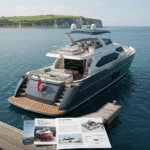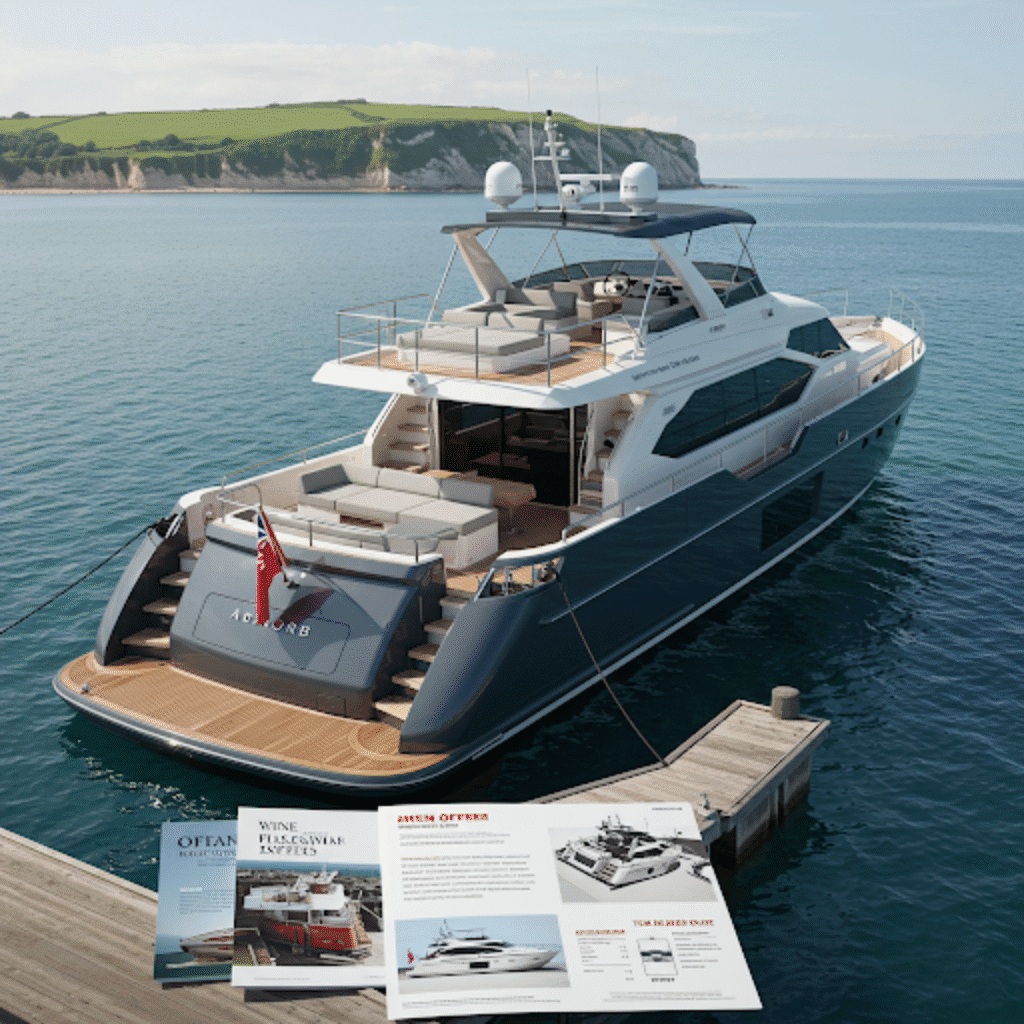
Setting Sail on Your Dream: A Comprehensive Guide to Buying a Yacht in the UK
The glint of sunlight on turquoise water, the gentle creak of rigging, the promise of undiscovered coves and distant horizons… The allure of owning a yacht is undeniable. It speaks to a desire for freedom, adventure, and a unique connection with the sea. For many in the UK, with its stunning coastline and proximity to European cruising grounds, the dream of buying a yacht feels tantalisingly close. But turning that dream into reality involves navigating a complex process, far beyond simply choosing a vessel that looks appealing.
Buying a yacht isn’t like buying a car; it’s a significant investment demanding careful consideration, thorough research, and a realistic understanding of both the joys and the responsibilities involved. This guide aims to equip you with the knowledge needed to embark on your yacht-buying journey with confidence, covering everything from understanding different types of yachts to budgeting for the true cost of ownership and navigating the purchase process specifically within the UK market.
Why Buy a Yacht? Understanding the Pull of the Ocean

Before diving into the practicalities, it’s worth reflecting on *why* you want a yacht. Is it for weekend escapes along the South Coast? Extended family holidays exploring the Scottish islands? Perhaps the thrill of club racing or the ambition of crossing the Channel and beyond? Understanding your primary motivation is crucial as it will heavily influence the type, size, and style of yacht that best suits your needs.
Owning a yacht offers:
- Unparalleled Freedom: The ability to set your own course and explore coastlines at your own pace is a powerful draw.
- Quality Time: Yachts provide a unique environment for bonding with family and friends, away from everyday distractions.
- Lifestyle and Recreation: From leisurely cruising and fishing to exhilarating sailing or water sports, a yacht is a platform for diverse activities.
- Travel Opportunities: Explore the varied UK coastline, hop over to France, the Channel Islands, or even venture further into the Mediterranean or Scandinavia.
- A Sense of Accomplishment: Mastering seamanship and navigating your own vessel brings a unique satisfaction.
While some view yachts as status symbols, the reality for most owners is a deep-seated passion for the sea and the lifestyle it enables. It’s about the experience, not just the possession.
Decoding the Fleet: Types of Yachts Explained
The term ‘yacht’ covers a vast range of vessels. Understanding the main categories is the first step in narrowing down your search.
Sailing Yachts
Powered primarily by the wind, sailing yachts offer a quieter, more traditional connection with the elements. They are generally more fuel-efficient for long distances (though most have auxiliary engines).
- Monohulls: The classic single-hulled design.
- Cruising Yachts: Designed for comfort and stability over outright speed, ideal for coastal cruising and longer passages.
- Racing Yachts: Built for performance, often with deeper keels, larger sail areas, and more spartan interiors.
- Racer-Cruisers: A popular compromise, offering good performance potential alongside comfortable accommodation.
- Multihulls: Featuring two (catamarans) or three (trimarans) hulls.
- Catamarans: Offer exceptional stability (they don’t heel), vast deck and interior space, and shallow draft (good for anchoring in bays). Often faster off the wind.
- Trimarans: Often designed for high performance, offering speed and stability, but with less accommodation space than catamarans.
Motor Yachts
Powered by engines, motor yachts offer speed, spaciousness, and ease of handling, especially in close quarters. They are ideal for those who prioritise comfort, entertaining, and covering ground quickly regardless of wind conditions.
- Planing Hulls: Designed to rise up and skim over the water at speed. Offer high cruising speeds but consume significantly more fuel. Common in sports cruisers and performance yachts.
- Displacement Hulls: Move *through* the water rather than over it. Limited to a theoretical maximum speed based on waterline length, but far more fuel-efficient, making them suitable for long-range cruising. Found on trawler yachts and many larger superyachts.
- Semi-Displacement Hulls: A hybrid design offering higher speeds than pure displacement hulls while retaining better fuel efficiency than planing hulls at moderate speeds. A common compromise.
Sub-types include:
- Flybridge Yachts: Feature an upper helm station and often additional seating/entertaining space, offering great visibility.
- Sports Cruisers: Sleek, fast, open cockpit designs often focused on day boating or short trips.
- Trawler Yachts: Sturdy, fuel-efficient displacement or semi-displacement vessels designed for long-distance cruising in comfort.
- Superyachts/Megayachts: Generally defined as yachts over 24 metres (79 feet), requiring professional crew and representing the pinnacle of luxury and capability.
Motorsailers and Gulets
These attempt to blend the attributes of both sailing and motor yachts, typically featuring comfortable accommodation and powerful engines alongside a sailing rig. They offer versatility but may compromise on pure sailing performance or motoring efficiency compared to specialized designs.
Before You Buy: Crucial Considerations
Impulse buying is rarely wise, especially with yachts. Consider these factors carefully:
1. The All-Important Budget: Purchase Price vs. Total Cost
This is the most critical factor. Don’t just focus on the asking price. The *total cost of ownership* is far more significant. As a rough (and highly variable) guide, annual running costs can range from 10% to 20% or more of the yacht’s value. We’ll delve deeper into these costs later, but factor in mooring, insurance, maintenance, fuel, and potential upgrades from day one.
2. Intended Use: Honesty is Key
How, where, and how often will you realistically use the yacht? Weekend pottering in the Solent demands a different vessel than crossing the Atlantic. Short-handed coastal cruising differs vastly from hosting large groups for day trips. Be honest about your abilities and ambitions.
3. Size Matters: Bigger Isn’t Always Better
Consider:
- Accommodation: How many berths do you genuinely need?
- Handling: Can you (and your regular crew, if any) comfortably handle a yacht of that size, especially in marinas or challenging conditions?
- Mooring: Larger boats mean higher mooring fees and potentially fewer available berths. Check local availability and costs.
- Crew: Very large yachts necessitate professional crew, adding significantly to running costs.
4. New Build or Pre-Owned Treasure?
- New Yachts: Offer the latest designs and technology, manufacturer warranties, and the ability to customise. However, they come with a higher initial price tag and suffer the steepest depreciation in the early years.
- Pre-Owned Yachts: Significantly lower initial cost, the previous owner has likely ironed out initial snags, and depreciation is slower. The key downside is the potential for hidden problems and wear and tear, making a thorough survey absolutely essential. The vast majority of yacht purchases fall into this category.
5. Hull Material: What Lies Beneath?
- GRP (Fibreglass): By far the most common material. Relatively low maintenance, easily repaired, durable. Potential for osmosis (blistering) in older hulls, though less common now.
- Steel: Very strong, ideal for high-latitude cruising or where impact resistance is paramount. Requires diligent maintenance to prevent rust. Heavy.
- Aluminium: Strong, lightweight, and corrosion-resistant (but susceptible to electrolysis if not properly managed). Often used for custom builds and performance cruisers. Can be expensive.
- Wood: Beautiful and traditional. Can be strong and long-lasting if well-maintained, but demands significant upkeep and specialist skills.
Navigating the Purchase Process: From Browse to Bill of Sale
Once you have a clearer idea of what you’re looking for, the search begins.
1. Finding Your Match
- Yacht Brokers: Specialist brokers act as intermediaries between buyers and sellers. Reputable brokers have extensive listings, market knowledge, and manage the transaction process. They typically represent the seller (who pays their commission) but owe a duty of care to the buyer. Some brokers also act specifically as buyer’s agents.
- Online Marketplaces: Websites like YachtWorld, The YachtMarket, Apollo Duck, and Boats.com aggregate listings from brokers and private sellers worldwide.
- Boat Shows: Events like the Southampton International Boat Show offer a fantastic opportunity to see many different boats side-by-side and talk to builders and brokers.
- Magazines and Clubs: Specialist yachting magazines and local sailing clubs can also be sources of listings and information.
2. Viewing and Shortlisting
Arrange viewings for promising candidates. Look beyond the superficial cleaning. Check for obvious signs of neglect, water ingress, strange smells (mould, diesel), condition of upholstery, woodwork, and equipment. Trust your instincts.
3. Making an Offer
Found a potential winner? Make a formal offer, usually via the broker. Crucially, this offer should be *subject to survey and sea trial*. A standard Sale and Purchase Agreement (often based on the Mediterranean Yacht Brokers Association – MYBA – format, adapted for UK law) will be used, outlining terms, timelines, and deposit arrangements (usually 10% held in escrow).
4. The Survey: Your Most Important Investment
Never, ever buy a yacht without a professional pre-purchase survey. This is an in-depth inspection by a qualified marine surveyor who acts solely for *you*, the buyer. Choose your surveyor carefully – look for members of recognised bodies like the Yacht Designers and Surveyors Association (YDSA) or the International Institute of Marine Surveying (IIMS). Do not rely on a survey commissioned by the seller or one done purely for insurance valuation.
The surveyor will examine:
- Hull and deck structure (including moisture readings for GRP, checks for osmosis or damage)
- Keel and rudder condition and attachment
- Engine(s) and machinery (often recommending a separate engine expert)
- Electrical systems
- Plumbing and tanks
- Steering gear
- Rigging (sailing yachts) – visual inspection from deck level; a full rigging survey may be extra.
- Safety equipment
- Interior condition
The survey report will detail findings, highlight defects, and recommend repairs, often prioritising them. This report is vital not only for your peace of mind but also for potential price renegotiation and securing insurance.
5. Sea Trial
This is your chance to see how the yacht performs on the water. Test the engine(s) at various speeds, check steering responsiveness, hoist the sails (if applicable), and operate key systems (autopilot, navigation electronics, winches) under load. Listen for unusual noises or vibrations.
6. Negotiation and Final Agreement
If the survey reveals significant issues, you can use the report to renegotiate the price with the seller, request they fix specific items before completion, or withdraw your offer (and typically get your deposit back, less any survey costs).
7. Legal Completion and Paperwork
Once satisfied, you move to completion. This involves:
- Final Payment: Transferring the balance of funds.
- Bill of Sale: The legal document transferring ownership. Ensure it’s correctly executed and warrants free title.
- Title Documents: Evidence of the seller’s ownership (e.g., previous Bills of Sale, Builder’s Certificate for newer boats).
- VAT Status: Hugely important, especially post-Brexit. You need proof that VAT was paid in the UK or EU, or evidence the boat qualifies for relief (e.g., built before VAT introduction). Buying a non-VAT paid boat can leave you liable for a hefty tax bill if brought into UK waters. Seek expert advice if unsure.
- Registration: Transferring the UK Ship Register documentation (Part 1 for internationally recognised title, or Part 3/SSR for simpler UK use) into your name.
- Deletion Certificate: If the yacht was registered abroad, ensure it’s been deleted from its previous registry.
- RCD Compliance: Recreational Craft Directive documentation (CE marking) is required for most boats built or first put into service in the EU/EEA after June 1998.
- Insurance: Arrange cover to start immediately upon completion.
The Iceberg Beneath: Understanding the True Costs of Yacht Ownership
The purchase price is just the tip of the iceberg. Ongoing costs are substantial and must be budgeted for realistically:
- Mooring/Berthing: Marina berths, especially on the South Coast, can cost thousands annually. Swinging moorings or dry stack storage are cheaper alternatives but less convenient. Costs vary hugely by location and facility level.
- Insurance: Comprehensive hull cover and third-party liability (P&I) are essential. Premiums depend on yacht value, type, age, cruising area, and your experience.
- Maintenance: This is the big one. Regular tasks include:
- Engine servicing (annual)
- Antifouling (applying paint to the hull below the waterline to prevent growth, usually annually or bi-annually)
- Sail and rigging checks/replacement (sailing yachts)
- Anode replacement (protects underwater metals from corrosion)
- Deck gear servicing (winches, windlass)
- Electronics upkeep/upgrades
- Plumbing and electrical checks
- Cosmetic upkeep (polishing, teak cleaning, varnish)
- Fuel: A major expense for motor yachts, less so for sailing yachts (though engine use is still common).
- Safety Equipment: Lifejackets, liferaft, flares, EPIRB etc. need servicing or replacing periodically.
- Winterisation/Storage: Costs for lifting out, storing ashore, covering, and preparing systems for winter if not used year-round.
- Training/Qualifications: RYA courses are highly recommended for safety and competence and often required by insurers.
- Upgrades: You’ll inevitably want to add or upgrade equipment over time (new sails, chartplotter, heating, etc.).
The UK Yachting Landscape
The UK offers fantastic and varied cruising grounds. The Solent is the bustling heart of UK sailing, while the West Country (Devon, Cornwall) offers stunning harbours and coastline. The challenging and beautiful waters of Scotland provide unrivalled scenery, and the East Coast offers unique rivers and estuaries. Good marina infrastructure exists nationwide, though demand, particularly in popular areas, can be high.
Organisations like the Royal Yachting Association (RYA) provide invaluable training, advice, and representation for boaters. British Marine represents the UK leisure marine industry. Be aware of specific regulations, including registration requirements and the crucial importance of correct VAT documentation.
Tips for First-Time Yacht Buyers
- Consider Starting Smaller: Gain handling experience and learn maintenance on a more manageable, less expensive boat first.
- Charter Before You Buy: Rent different types and sizes of yachts to see what you enjoy and what suits your style.
- Get Qualified: RYA courses (like Day Skipper or Coastal Skipper) provide essential skills and build confidence.
- Don’t Rush: Finding the right yacht takes time. Be patient and do your homework.
- Budget Conservatively: Overestimate running costs rather than underestimating them.
- Network: Talk to experienced yacht owners at clubs or marinas – they are often a great source of practical advice.
Your Voyage Begins
Buying a yacht is a significant undertaking, blending dreams of open water with the hard realities of finance and maintenance. It requires diligence, research, and a healthy dose of realism. However, by understanding the process, carefully considering your needs, carrying out thorough checks, and budgeting realistically for the total cost of ownership, you can navigate the purchase successfully.
The reward? Finding the right vessel that unlocks years of adventure, exploration, and cherished memories on the water. The journey to ownership might be complex, but the horizons it opens are boundless. Happy hunting, and may you find the perfect yacht to launch your dreams.







